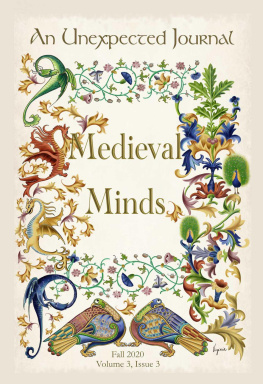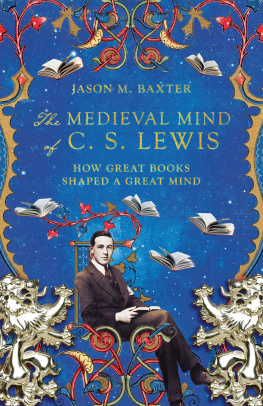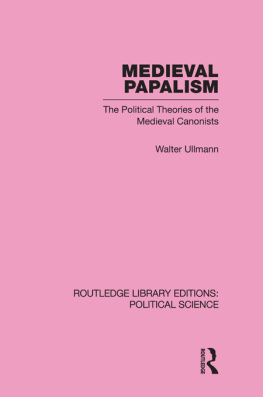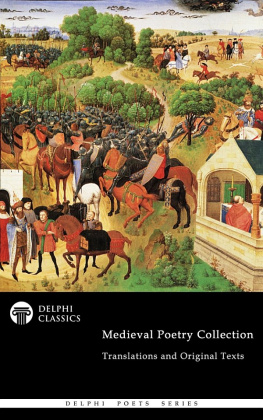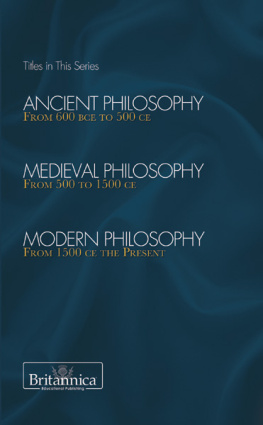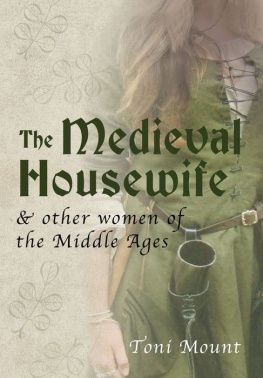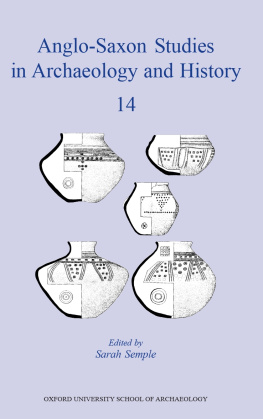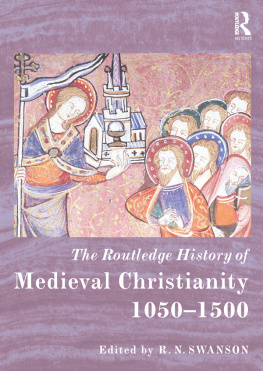An Unexpected Journal
Medieval Minds
Fall 2020
Volume 3, Issue 3
C OPYRIGHT 2020 - An Unexpected Journal.
Digital Edition
Credits
Managing Editor : Zak Schmoll
Cover Art : Virginia De La Lastra
Journal Mark: Erika McMillan
Journal Design and Layout: Legacy Marketing
Editors: Carla Alvarez, Donald Catchings, Annie Crawford, Alison DeLong, Karise Gililland, Jason Monroe, Annie Nardone, Cherish Nelson, Josiah Peterson, Zak Schmoll, Rebekah Valerius
Contributors: C.M. Alvarez, Donald W. Catchings, Jr., Annie Crawford, Alison DeLong, Karise Gililland, Sandra G. Hicks, Alex Markos, Korine Martinez, Jacqueline Medcalf, Seth Myers, Annie Nardone, Cherish Nelson, Holly Ordway, Ted Wright
All rights reserved. This book is protected by the copyright laws of the United States of America. No part of this publication may be reproduced, distributed or transmitted in any form or by any means, or stored in a database or retrieval system, without the prior written permission of the publisher.
An Unexpected Journal
Houston, TX
http://anunexpectedjournal.com
Email: anunexpectedjournal@gmail.com
Annie Crawford on Holy Wonder
R evolution! Copernicus did fling
Earths sphere into high orbit.
Luna laughed as Terra stumbled to conceive
Her own reeling, tethered traverse.
Neither up nor down, twin poles tip and taunt,
Horizons are lost and words echo naught.
Love no more moves her celestial spheres,
The airless void is Eves womb now.
Beyond Terras fragile veil, the suns golden
Bright rays inflame and ravage all.
Life clings to its chance outpost, marbled blue,
As cosmic dangers marshal round.
She is an orphaned beauty, the soul child
Of atoms, random profligate seed.
Voyager exposes Saturns icy rings
Stretched round their barren no-where world.
Hubbles optic burst slaps home with cold dread
As the angelic host falls silent.
Alone.
Thou observed when first the stars sang for joy;
Quantum spark set the cosmos aflame.
Boundless wave in particulate presence;
Time unfolds from heavens One door.
All cosmos is the Lords unsparing gift.
Odds are lost and miracles return.
Galactic legions march the realm of space,
Now the infinite made extant.
Apollos glory! This stars perfect blaze,
Logos light and loves endless burn.
As Marys womb did eternal God enfold,
So earths small sphere His Body holds.
The Messenger reclaims his medium
and sets fine-tuned forms dancing again.
Our silvered moon keeps tilt and tide;
And gloves Sinais bright holy face.
Signed world, rare Earth revolves to wonder.
All this for you, God made, was made, man.
***

L IKE SO MANY CHILDREN , I grew up feeling a sense of wonder as I gazed into the dark night sky. The unfathomable otherness of the moon, the dazzling Milky Way, and the twinkling bright planets, right there naked before our very eyes, create a sense of both awe and longing. The stars and vast expanse of space are both so very real and yet so very unreal. To gaze upon the heavens and feel spiritual wonder is an utterly natural and fundamentally human experience. [1] Yet atheists such as Carl Sagan and Richard Dawkins have endeavored to strip the heavens of any spiritual meaning. According to Sagan, We live on a hunk of rock and metal that circles a humdrum star that is one of 400 billion other stars that make up the Milky Way Galaxy, which is one of billions of other galaxies. [2] Sagans video series, Cosmos , boldly taught a generation to look up to the heavens and wonder not at the glory of God but at our own existential abandonment and ultimate meaninglessness. There is a war in the heavens.
In the poem Cosmos, I endeavor to expose this battle over cosmological meaning and provide the imaginative tools to win it. Using the structural framework of the Medieval cosmos, this poem progresses through the modern deconstruction of meaning in the universe to a chiastic turning point at which the poem then rebuilds layers of spiritual significance through a renewed understanding of cosmology. The poems sacramental conception of the heavens draws from both the Medieval imagination and new scientific data, such as quantum particles, the existence of galaxies, and the indeterminate nature of light.
I have chosen to use poetry as a medium for meditation on cosmological meaning in order to pry open cracks within the modern mind so that old ideas might seep in. Poetry forces the imagination to actively engage with the faculties of analytical understanding. The density of poetic imagery demands that the reader makes unfamiliar connections between symbols and ideas which wrestle open new possibilities for understanding and thereby prompts new interpretive lenses for old, dried-up facts. Cosmos ventures to take advantage of this potential in poetry in order to help modern readers reimagine the universe as a place of wonder and sacred meaning.
Through the chiastic structure of Cosmos, the reader reverses history. The first half of the poem follows the modernist interpretation of the universe as the poem ascends from earth, through the Medieval layers of the heavens up to the edge of the known universe. Here at the edge of meaninglessness, the reader faces the stark psychological alienation that is the fruit of atheistic materialism. If Sagan is correct that the Cosmos is all that is, or ever was, or ever will be, then we are orphaned souls, isolated minds, the freak accidents of an unknowing world. [3]
The psychological alienation of materialism expressed in the central word Alone provides the point of inversion from feigned meaninglessness to reintegration of physical reality and spiritual meaning. Only the transcendent God, dwelling in eternal Trinitarian unity, is capable of bearing the weight of such a word as Alone. He alone can provide the foundation for both the material reality of the cosmos as well as the spiritual reality of the human soul. His Being alone can allow the poem to reweave spiritual meaning into the material fabric of the universe.
The chiastic structure of the poem further conveys that the atheistic understanding of the universe promoted by Dawkins or Sagan is every bit as much of an imaginative construct as any other cosmological model. Commenting on the Owen Barfields Saving the Appearances, Malcolm Guite notes that paradoxically, it is the human construction of a picture of the universe as supposedly dead, inert, and merely material that may turn out to be the vain or false imagination, the idol from which we need to be liberated in our search for truth. [4] In The Discarded Image, C.S. Lewis also argues that the Medieval cosmological model was not so much disproven by scientific facts as discarded by a change in imagination. Lewis contends that each model of the universe is influenced by the prevailing temper of mind... and reflects the prevalent psychology of [the] age. [5]
Next page
